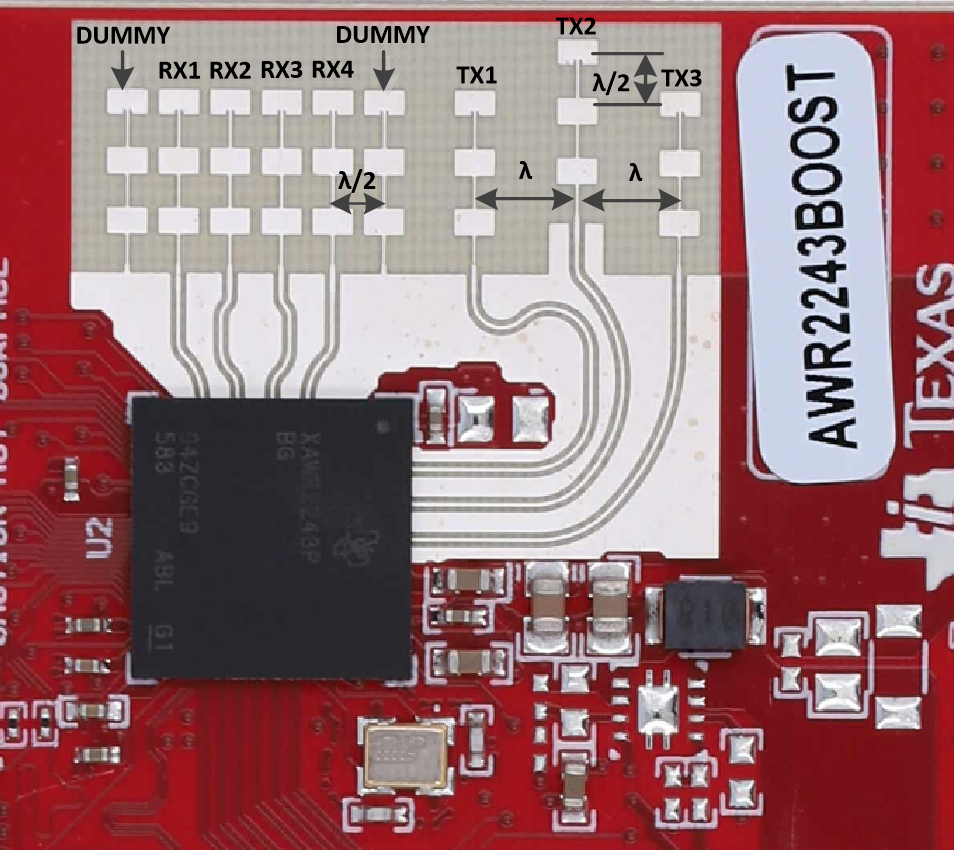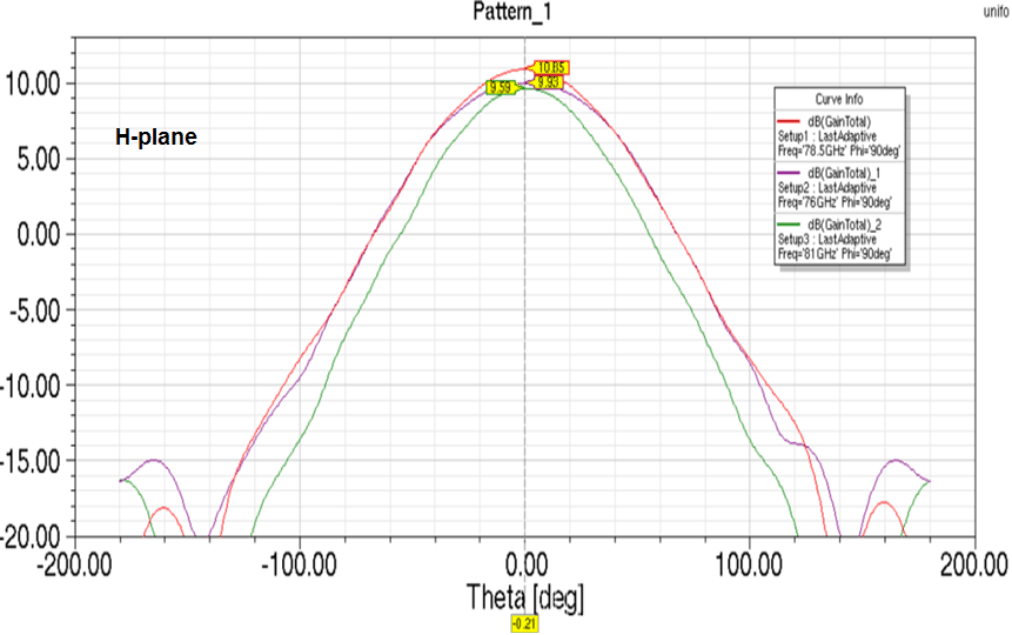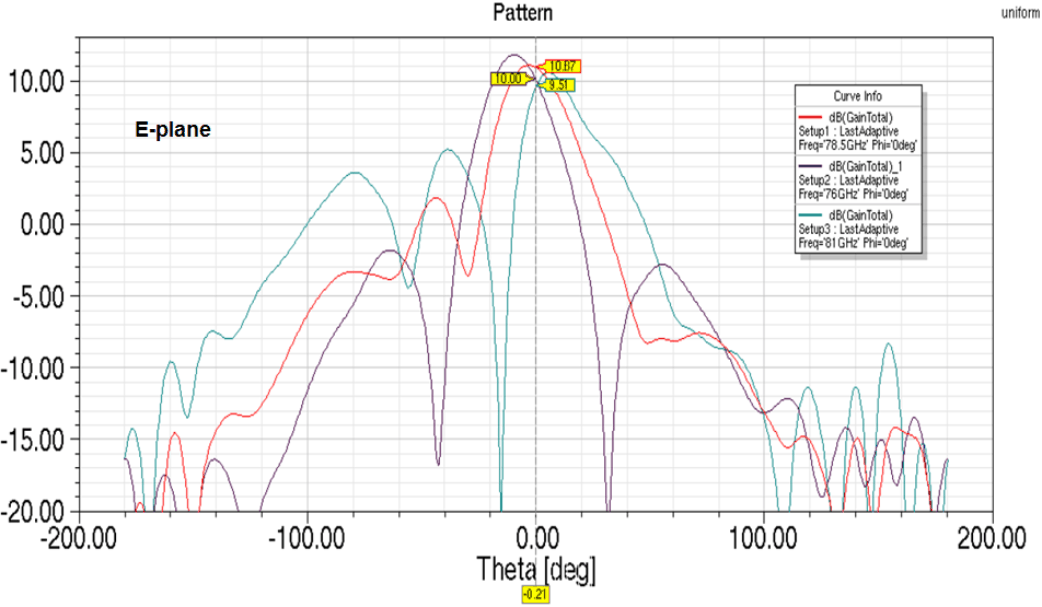SPRUIT8D February 2020 – February 2021 AWR2243
- Trademarks
- 1Getting Started
- 2Hardware
- 3Design Files and Software Tools
- 4Design Revision History
- 5Mechanical Mounting of PCB
- 6PCB Storage and Handling Recommendations
- 7Regulatory Information
- 8Revision History
2.6 Antenna
The BoosterPack includes onboard etched antennas for the four receivers and three transmitters, which enables tracking multiple objects with their distance and angle information. This antenna design enables estimation of both azimuth and elevation angles, which enables object detection in a 3-D plane (see Figure 2-9).
 Figure 2-9 PCB Antenna
Figure 2-9 PCB AntennaThe antenna peak gain is > 10.5 dBi across the frequency band of 76 to 81 GHz. The radiation pattern of the antenna in the horizontal plan (H-plane) and elevation plan (E-plane) is as shown in Figure 2-10 and Figure 2-11.
 Figure 2-10 Antenna Pattern in H-Plane
Figure 2-10 Antenna Pattern in H-Plane Figure 2-11 Antenna Pattern in E-Plane
Figure 2-11 Antenna Pattern in E-Plane